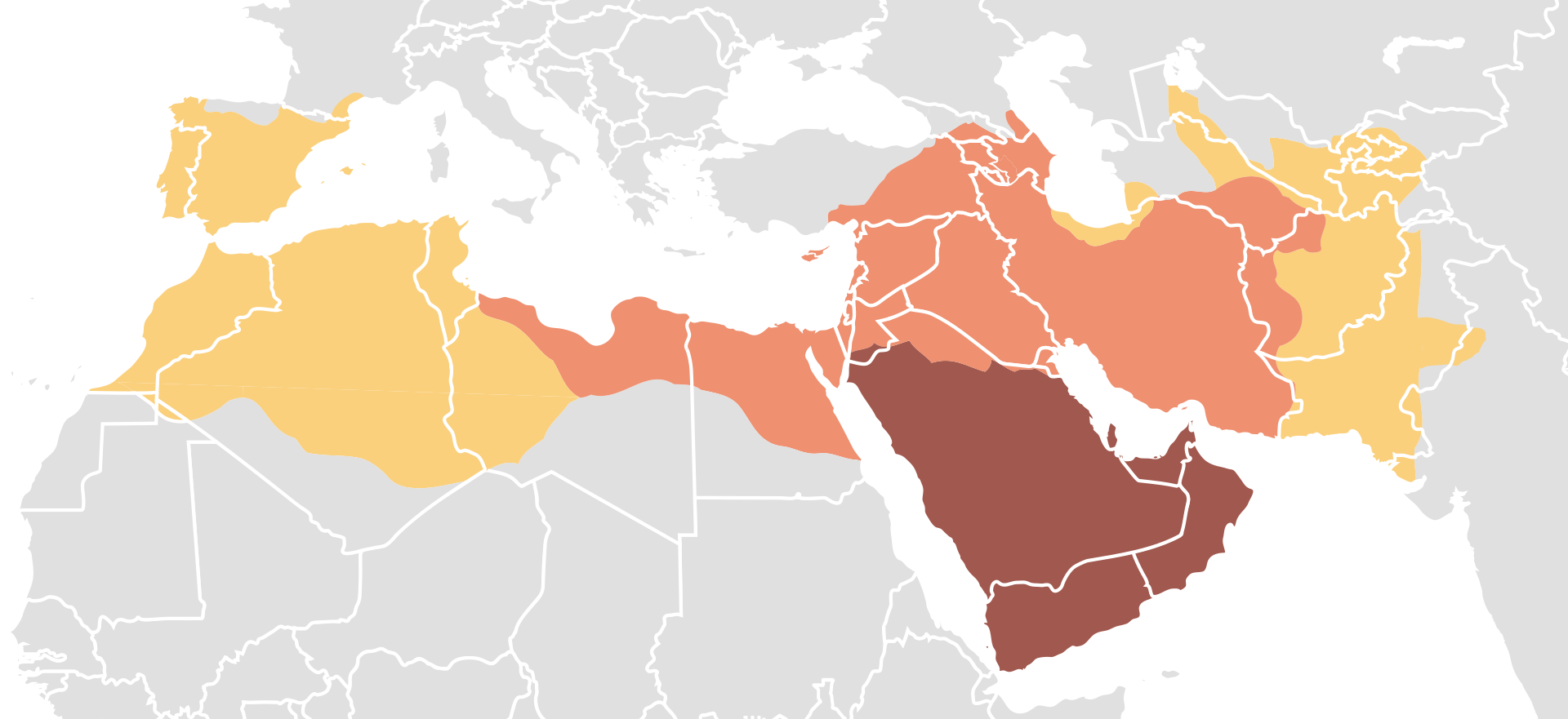To merely categorize the Silk Road as a trade route where only tangible goods were sold and purchased would not be factually correct. Ideologies began to spread all over Eurasia, allowing for religion to spread from homelands to foreign lands. Roman Catholicism, Buddhism, Hinduism, and Christian Churches were all on the move. However, the second largest religion in the world today also had a sphere of influence on the Silk Road, (History, 2019). [1]
Islam is an Abrahamic religion that started in the 7th century, (History, 2019). The religion started in Mecca and followers believe that the prophet Muhammad was shown Allah’s true word, (History, 2019). Islam was one of the many religions that began spreading from travelers such as latter explorer Ibn Battuta and others traveling from Mecca, (Ross, Ibn Battuta). Islam did dominate a large portion of the globe for quite some time. They had a large influence and following in the Middle East, but Muslims also ruled much of the Iberian Peninsula after invading the land in 711 and ultimately losing control in 1492, (BBC, 2009). The sphere of influence was heavy in the East and eventually started to gravitate its way towards West on the Silk Road.[2]

Islam began spreading to the West and cities of Islamic influence began appearing in many places. Khotan, (Today known as Xinjiang), was one of the first cities to be conquered by Islam, (Hansen, 24). The Islamic conquest of the former Buddhist town brought a major shift to the area, influencing it for years to come, (Hansen, 337). Khotan was not the only city or nation where Islam traveled to. Other oasis cities in Eurasia thrived on Islamic culture such as New Saray, which is now modern day Kobovala, (Dunn, 149). Ibn Battuta, a famous Moroccan Muslim Scholar, even made his way to the farthest known eastern Islamic Kingdom. This place was known as Samudra, which is now modern-day Lhokseumawe, Indonesia, (Dunn, 212).[3]
However, one of the most impressive displays of an Islamic Oasis was in Delhi, India. Delhi was of the best examples of Islam on the move. Modern-day New Delhi became an Islamic haven for Muslims looking to start a new. Both Muslims and Hindu Converts built their cities around the already-existing walls of the former Hindu town, Kil’a Ray Pithora, (Dunn, 161). The city was full of beautiful Mosques and religious scholars who all lived under the rules of Islam.[3]
Certain troubles did arise like it did in other Islamic towns. Mongol invasions and underground rebellions being formed against one of the Sultans Muhammad Tughluq ultimately led to the slow decline of Islamic Delhi, (Dunn, Chapter Nine). Other cities became acceptable to Mongol invasions and pushback from citizens who did not wish to convert to Islam. Many rulers who converted to Islam also demanded that their citizens convert as well, which completely juxtaposes earlier Silk Road rulers, who allowed for the practice of many religions if tributes were paid, (Hansen, 446).[3]
Islam has stayed around for centuries and has had great influence both in and out of the Middle East. Its history on the Silk Road is just as important as any other religion. The influence of Islam has caused influential events that changed the history of certain regions. Rulers, travelers, and the common man all were acceptable to its sphere of influence.[3]
[1] This is the text of footnote one.
[2] This is the text of footnote two.
[3] This is the text of footnote three.
Hansen, Valerie. The Silk Road: A New History with Documents (Oxford, 2016).
Kim Hodong, “The Unity of the Mongol Empire and Continental Exchanges over Eurasia,” Journal of Central Eurasian Studies 1 (2009), pp. 1–17.